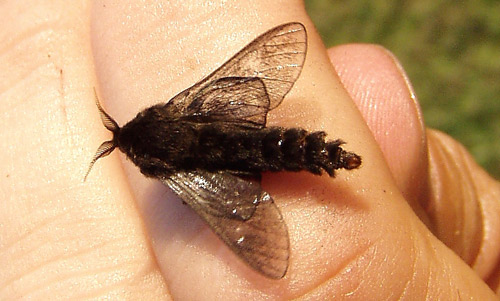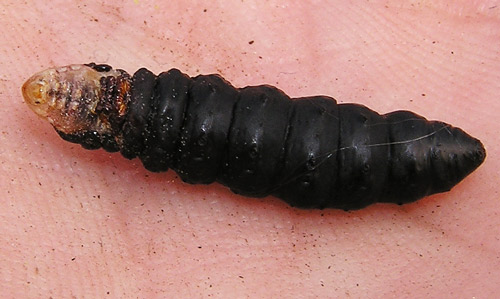By Reba Kocher
Listen to this blog post here: bagworms.mp3
HAPPY NATIONAL MOTH WEEK! As all of you should know by now, I LOVE moths. Jandi asked me if I knew National Moth Week was July 20-28, 2019, I had no idea. Needless to say that I am very excited! This week, I am going to highlight the bagworm. They belong to the family Psychidae and are also known as bagmoths or casemoths. There are 1,350 species of bagworms worldwide. We will be focusing on the common bagworm, or Thyridopteryx ephemeraeformis Haworth (talk about a mouthful, am I right?). These little guys can be found right here in Ohio. Maybe in your own backyard! Chances are if you have heard about them it’s because they are pests that eat the buds on deciduous and conifer trees. Read on to learn about their life cycle and about control methods for your landscapes.
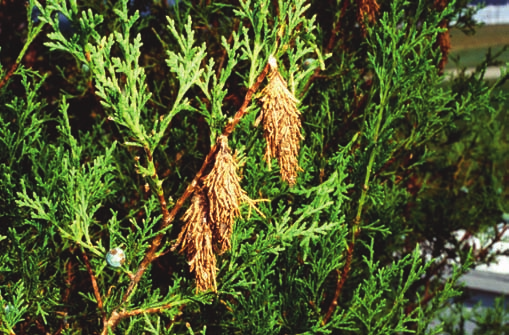
Have you seen something like this hanging from your arborvitae?
Their bags are camouflaged with leaves and bark and can be really hard to see. They actually weave pieces of their host plant into their bags with silk! Their bags are between 1.5-2.5 inches long. Inside the bag, the larva is tan/brown with black spots. The caterpillars begin to pupate in late August. The adult males emerge from the bag and are fuzzy and black with clear wings. He has a wingspan of less than an inch (25mm). Females do not leave the bag. They will mate inside the bag then the females lay anywhere from 500-1,000 eggs, and then she leaves the bag. Neither of the adults feed. As a result, the males die within one or two days and the females die within a week. The eggs hatch in late May/ early June.
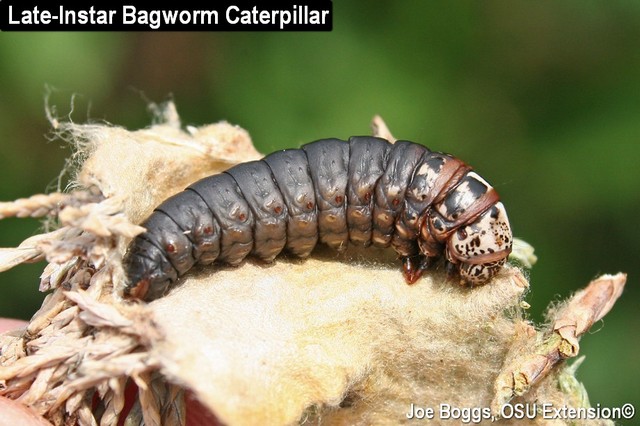
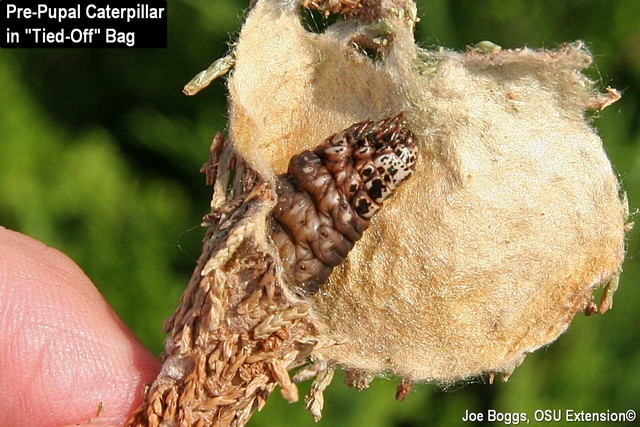
Bagworm larvae. Photos taken by Joe Boggs, OSU Extension.
An adult male bagworm. Photo taken by Curtis Young, Ohio State University.
An adult female bagworm. Photo taken by Curtis Young, Ohio State University.
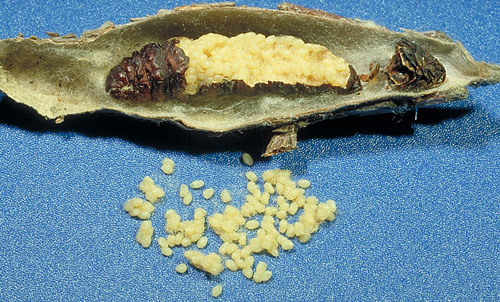
Bagworm Eggs. Photo taken by Curtis Young, Ohio State University.
Since the adults don’t eat, all of the damage done to plants is caused by the caterpillars. Because the bagworm lays so many eggs, they can easily overpopulate an area causing plant death. Most people do not realize they have bagworms until severe plant damage has been done. So, what can you do to rid yourself of this problem? OSU Extension recommends handpicking and destroying the bags. This is the most effective method of bagworm control. It is important that when you remove the bags that you also cut the attachment silk band, so that branch will not be girdled again. They do not recommend that you use pesticides because the bagworms will actually begin to pupate faster if they detect pesticides on the plant foliage. Click here to read more control methods recommended by the OSU Extension: https://ohioline.osu.edu/factsheet/HYG-2149-10
References & Further Reading:
https://ohioline.osu.edu/factsheet/HYG-2149-10

